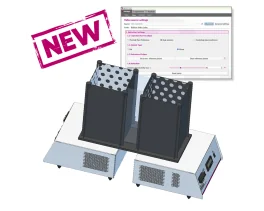Authors
Lyons DN, Kniffin TC, Zhang LP, Danaher RJ, Miller CS, Bocanegra JL, Carlson CR, Westlund KN
Lab
Department of Physiology, University of Kentucky, United States.
Journal
Neuroscience.
Abstract
Our laboratory previously developed a novel neuropathic and inflammatory facial pain model for mice referred to as the Trigeminal Inflammatory Compression (TIC) model. Rather than inducing whole nerve ischemia and neuronal loss, this injury induces only slight peripheral nerve demyelination triggering long-term mechanical allodynia and cold hypersensitivity on the ipsilateral whisker pad. The aim of the present study is to further characterize the phenotype of the TIC injury model using specific behavioral assays (i.e. light-dark box, open field exploratory activity, and elevated plus maze) to explore pain- and anxiety-like behaviors associated with this model. Our findings determined that the TIC injury produces hypersensitivity 100% of the time after surgery that persists at least 21 weeks post injury (until the animals are euthanized). Three receptive field sensitivity pattern variations in mice with TIC injury are specified. Animals with TIC injury begin displaying anxiety-like behavior in the light-dark box preference and open field exploratory tests at week eight post injury as compared to sham and naïve animals. Panic anxiety-like behavior was shown in the elevated plus maze in mice with TIC injury if the test was preceded with acoustic startle. Thus, in addition to mechanical and cold hypersensitivity, the present study identified significant anxiety-like behaviors in mice with TIC injury resembling the clinical symptomatology and psychosocial impairments of patients with chronic facial pain. Overall, the TIC injury model's chronicity, reproducibility, and reliability in producing pain- and anxiety-like behaviors demonstrate its usefulness as a chronic neuropathic facial pain model.
Source :

 Pain - Thermal Allodynia / Hyperalgesia
Pain - Thermal Allodynia / Hyperalgesia Pain - Spontaneous Pain - Postural Deficit
Pain - Spontaneous Pain - Postural Deficit Pain - Mechanical Allodynia / Hyperalgesia
Pain - Mechanical Allodynia / Hyperalgesia Learning/Memory - Attention - Addiction
Learning/Memory - Attention - Addiction Physiology & Respiratory Research
Physiology & Respiratory Research











![Dynamic Weight Bearing 2.0 – Postural Module [Add-on]](https://bioseb.com/733-home_default/dynamic-weight-bearing-20-add-on-postural-module.jpg)
























 Pain
Pain Central Nervous System (CNS)
Central Nervous System (CNS) Neurodegeneration
Neurodegeneration Sensory system
Sensory system Motor control
Motor control Mood Disorders
Mood Disorders Other disorders
Other disorders Muscular system
Muscular system Joints
Joints Metabolism
Metabolism Cross-disciplinary subjects
Cross-disciplinary subjects CONFERENCES & MEETINGS
CONFERENCES & MEETINGS